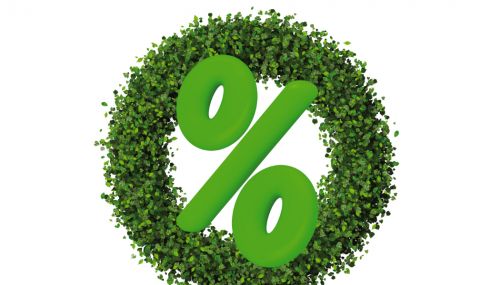All
2021: Year in Review

Our industry’s biggest stories of the past 12 months
Earlier this year, our colleagues in the National Energy & Fuels Institute and American Energy Coalition came up with a novel idea: since our associations have been working so closely together to help confront our industry’s greatest challenges, why not produce a monthly article that would help keep liquid heating fuel business leaders and their colleagues up to speed on all that we’ve been doing.
Unlike previous columns written independently by NEFI or AEC, this one would be the product of both groups working together with input from our respective members, supporters and state association partners. Additionally, in this spirit of collaboration, the article would not be published by any one magazine, but instead made available to all of the major trade publications covering the liquid heating fuels industry.
For the name of the column, we chose to go big and bold. “The Renewable Revolution – Turning Vision Into Reality” speaks to the ambitious end-game of our associations and the critical nature of our work, namely ensuring the survival and growth of Main Street America’s liquid heating fuels industry for future generations. Over the past 12 months, we have seen some tremendous victories on this front while also confronting a number of new and intensifying challenges.
This article provides a recap of some of our industry’s biggest stories of 2021, with an eye toward the opportunities and threats that liquid heating fuel businesses may continue to see in the months and years ahead.
Expanding Access to Low- and Zero-Carbon Heating Fuels
The question of supply has always been one of the biggest issues surrounding our industry’s adoption of cleaner fuels. This year, however, we have made some incredible strides, beginning with our successful efforts to ensure that heating oil distributors would be eligible and considered for cost-sharing grants under the U.S. Department of Agriculture’s Higher Blends Infrastructure Incentive Program (HBIIP). To date, under this program, nine heating oil suppliers from six Northeast states have been awarded $11 million for terminal upgrades that are expected to increase biodiesel sales in the region by over 473 million gallons. HBIIP grant recipients represent several of the biggest heating oil wholesalers in the Northeast, including Buckeye Terminals and Global Companies, among others.
Of course, it’s not only wholesalers driving the industry’s adoption of renewable liquid heating fuels; retailers have also taken the ball and ran with it. Earlier this year, Star Group L.P. — parent company of Petro Home Services, one of the largest liquid heating fuel retailers in the U.S. — announced it would begin selling B20 to all of its approximately 400,000 heating oil customers. Also, in recent months, Hart Home Comfort — the Long Island based retail outfit owned by NEFI Vice Chair Ray Hart — began delivering B50 to all of its customers in the New York metropolitan area (see “Bringing B50 to Market” from this issue).
Adopting these higher blends of biodiesel is critical as we move toward the Providence Resolution’s goals of 15% greenhouse gas reductions by 2023 and 40% by 2030. But to achieve the end-goal of net-zero emissions, our industry will need to leverage a full range of advanced and cellulosic biofuels. Here too, we’ve made great strides in 2021. New York’s Vassar College has announced it is converting its campus from natural gas heating to cellulosic biofuel derived from sawdust and tree trimmings. Additionally, cellulosic fuel producer Biofine Developments Northeast — makers of ethyl levulilnate (EL), a negative-carbon fuel made from forestry waste — announced it would a establish a state-of-the-art biorefinery at the site of a former paper mill in Lincoln, Maine. The company has also signed a purchase agreement with Sprague Operating Resources to help bring EL to market in the Northeast.
Supporting America’s Families and Grids through National Crises
Liquid heating fuels remain a key part of our nation’s critical infrastructure for several reasons, not least of which is their superior energy density. It’s for this reason that during times of peak demand, the grids in New England and New York turn to businesses like yours to help keep the lights on. We see this happen every winter, but the challenges to electric grids were perhaps best illustrated this past February when a statewide energy crisis in Texas led to widespread blackouts and hundreds of deaths. In the wake of this disaster, the Federal Emergency Management Agency sent 60 generators and 10,000 gallons of winterized fuel to Texas to help support the state’s recovery.
Of course, this wasn’t the only national crisis our industry responded to in 2021. We have also continued to provide warmth, safety and comfort to millions of Americans as they face resurgences of the COVID-19 pandemic. Going beyond helping keep our neighbors safe at home and in their places of business, our industry has fueled testing and vaccination sites. Additionally, NEFI has advocated for fuel delivery drivers and HVAC service technicians to be considered essential workers so that they can continue to do their jobs. Just as we played an integral role in the pandemic response, we continue to support Main Street businesses’ employees and customers throughout the recovery.
This brings us to the latest potential crisis – a surge in energy prices. At the start of the heating season, wholesale and retail prices of heating oil and propane rose sharply along with the cost of crude oil, natural gas, and electricity. Again, this isn’t the first time our industry has been challenged by volatile energy markets, and it likely won’t be the last. What’s most important is that we continue to serve our customers reliably during these trying times. NEFI has been in contact with the federal government to discuss potential issues, and heating fuel dealers continue to offer a range of options to help their customers navigate volatile economic conditions, including payment plans and access to the Low-Income Home Energy Assistance Program. No doubt, there may be more challenges ahead this winter, but our industry, as always, stands ready to be part of the solution.
Facilitating Our Industry’s Continued Survival and Growth
AEC and NEFI leaders continue to actively participate in the Net-Zero Taskforce, a group of heating fuel business and association representatives working to ensure our industry’s survival and growth for future generations. We meet biweekly to discuss issues such as those covered in this article and strategize regarding next steps on our collective path to a net-zero carbon future. The third annual Industry Summit held this past September at the 2021 HEAT Show demonstrated that we remain firmly committed to the goals of the Providence Resolution, and confirmed that the unified front presented by that historic agreement has made us stronger and more resilient than ever.
On September 27-29, 2022, the HEAT Show returns to where it all started, the Rhode Island Convention Center in Providence – site of the first annual liquid heating fuel Industry Summit and the birthplace of the Providence Resolution. We’re going back to show just how far our industry has come since the resolution passed unanimously in September 2019, and to demonstrate how much further we can go when we continue to support one another’s efforts. Additional information on this event will be announced in the near future, but in the meantime you can find out more by visiting HEATShow.com.
In the weeks and months ahead, you will also hear more about the liquid heating fuel industry’s Survive & Thrive Fund, an initiative announced in the second installment of this column from June 2021. This fund is being launched to give local heating fuel businesses like yours the opportunity to play a more active role in determining the industry’s future. It will help raise money for mission-critical activities ranging from consumer marketing and communications to legal actions and legislative advocacy. Make no mistake: our industry has achieved significant victories over the past 12 months, but we still have a long way to go.
As mentioned in the September installment of this column, the heating oil industry lost more than 1.4 million customer accounts, or approximately 25% of market share, between 2010 and 2019. Now, for the first time in a generation, we are finally positioned to reverse this trend and expand our businesses with new sustainable products and revenue streams. We are looking forward to a bright and prosperous future, but we can only get there with your continued support. Please keep this in mind as you consider the next steps for your organization.
Related Posts
 How to Set Your Business Apart with Renewable Propane
How to Set Your Business Apart with Renewable Propane
Posted on October 16, 2025
 EIA Report: Biodiesel and Renewable Diesel Imports Fall Sharply
EIA Report: Biodiesel and Renewable Diesel Imports Fall Sharply
Posted on October 16, 2025
 Northeast Liquid Fuel Providers Put Higher Bioblends in Focus
Northeast Liquid Fuel Providers Put Higher Bioblends in Focus
Posted on August 19, 2025
 Lower Carbon Lineup Puts Businesses on the Path to Net Zero Goals
Lower Carbon Lineup Puts Businesses on the Path to Net Zero Goals
Posted on August 18, 2025
Enter your email to receive important news and article updates.
